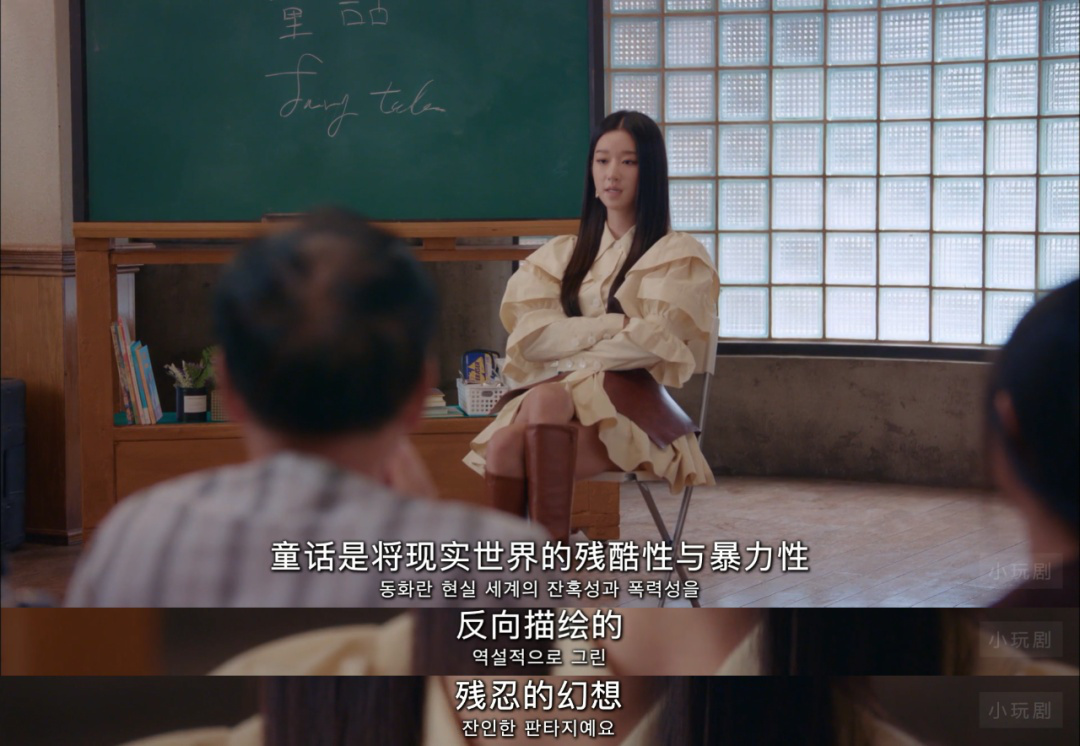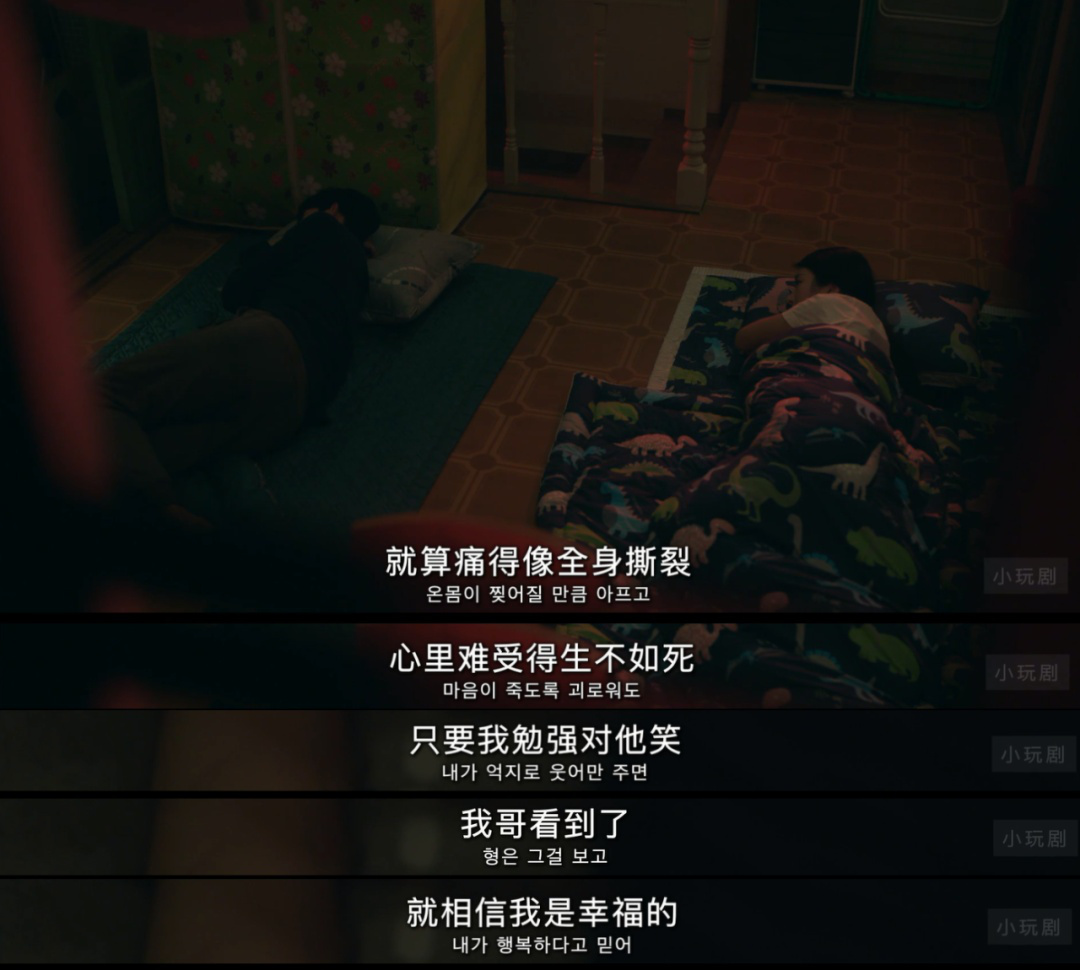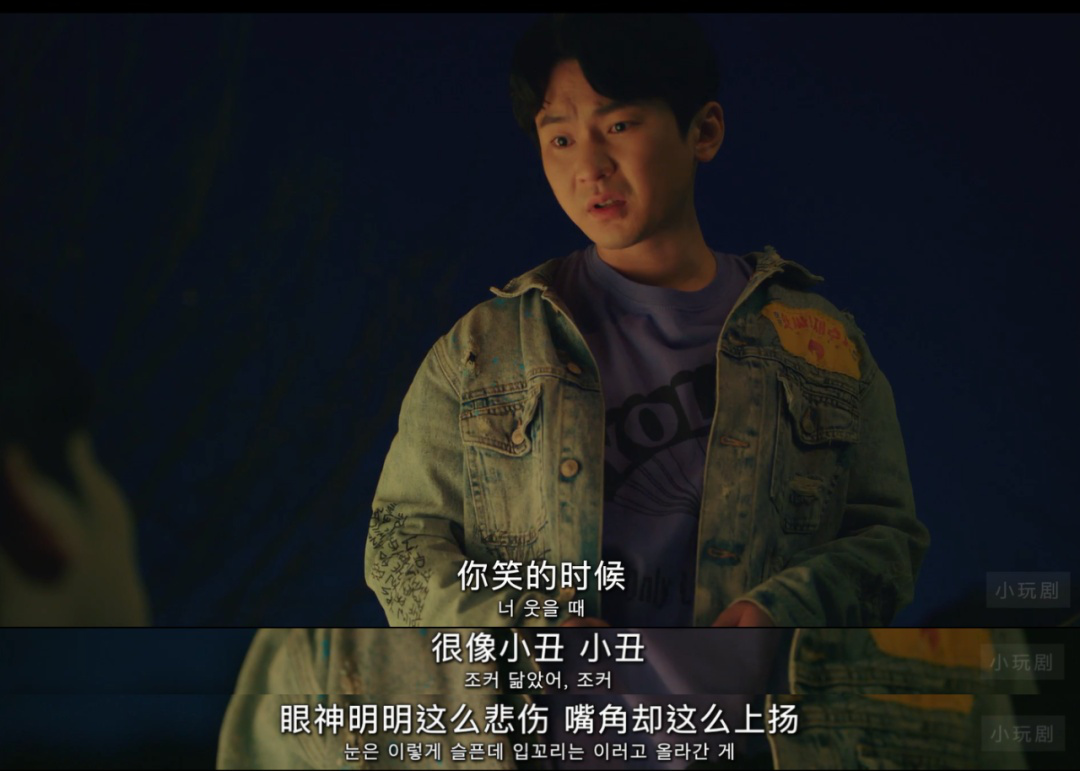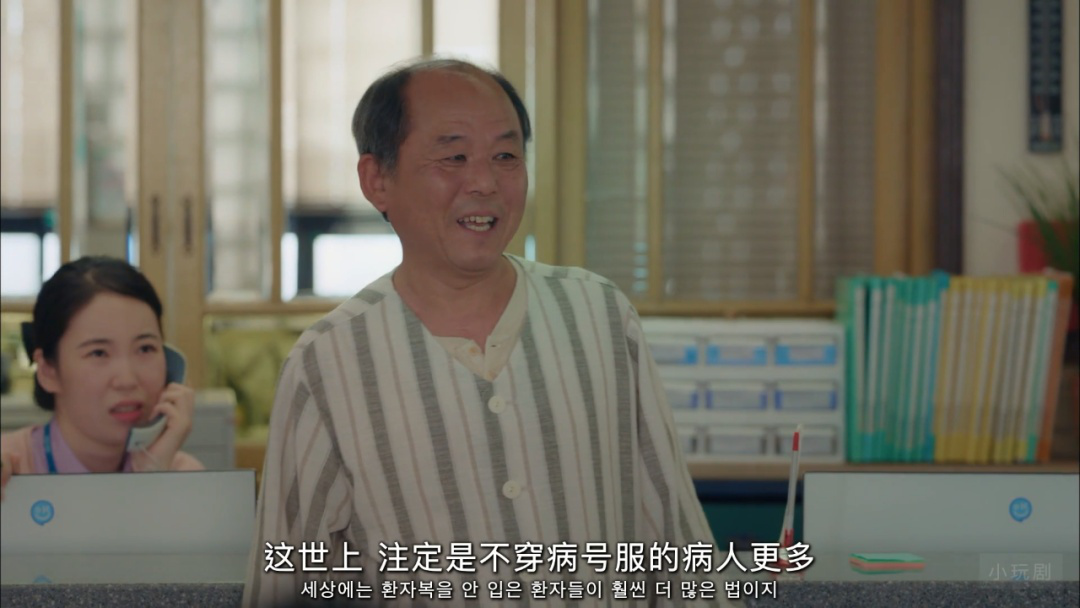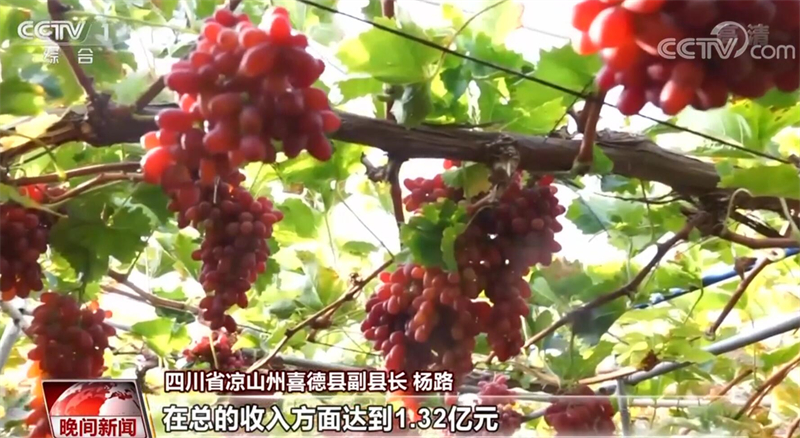
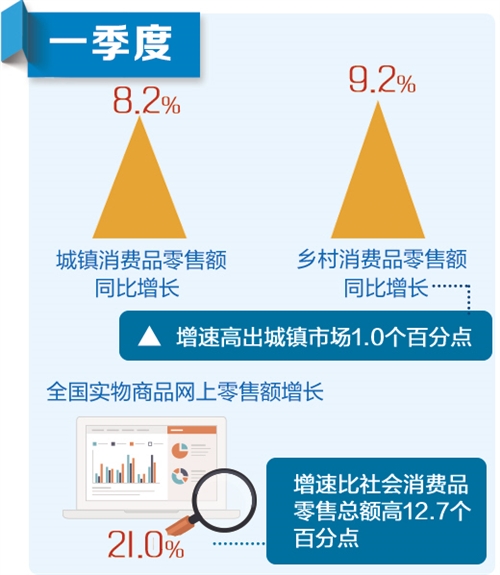


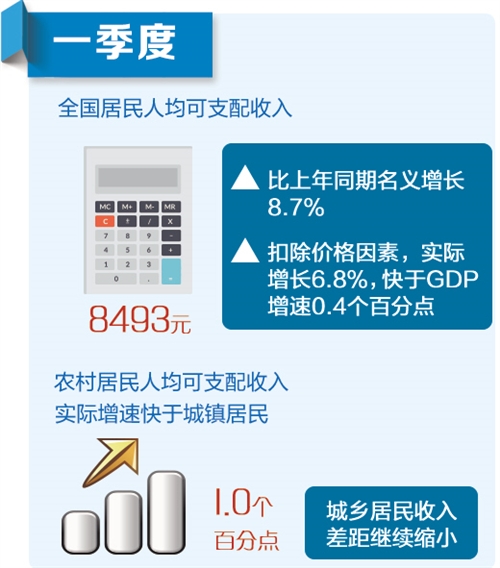
Investment continues to make efforts in making up shortcomings, transformation and upgrading, consumption patterns continue to innovate and develop, the employment situation continues to improve, and the income gap between urban and rural residents continues to narrow … … In the first quarter of this year, with the steady economic and social development, people’s living standards have been continuously improved, and the people’s sense of acquisition, happiness and satisfaction have been continuously enhanced. In the future, with the continuous implementation of various policies to benefit the people and the people, our life will be even better.
The investment growth rate rose steadily and the structure continued to be optimized and upgraded.
Peng Yongtao, Director of Investment Department of National Bureau of Statistics
With the implementation of a series of "stable investment" policies, the growth rate of fixed asset investment in China has steadily rebounded. In the first quarter, the total investment in fixed assets (excluding farmers) was 1,018.71 billion yuan, a year-on-year increase of 6.3%. At the same time, investment in short-boarding, transformation and upgrading has continued to exert strength, and the investment structure has been continuously optimized. The key role of investment in optimizing the supply structure continues to be highlighted.
I. Infrastructure investment has stabilized and rebounded.
Since October 2018, the growth rate of national infrastructure investment has continued to pick up, with a year-on-year increase of 4.4% in the first quarter of this year, an increase of 0.6 percentage points over last year.
The growth rate of investment in areas related to people’s livelihood has accelerated. In the first quarter, investment in the social sector increased by 14.3% year-on-year, with the growth rate increasing by 4.1 percentage points and 2.4 percentage points respectively from January to February and last year.
Second, the investment structure of manufacturing industry continued to be optimized.
In the first quarter, manufacturing investment increased by 4.6% year-on-year. Among them, the growth rate of investment in high-tech manufacturing industry has accelerated. In the first quarter, the investment in high-tech manufacturing industry increased by 11.4%, the growth rate was 5.2 percentage points higher than that in January and February, and it was 6.8 percentage points higher than that in all manufacturing industries.
The growth trend of transformation and upgrading investment in manufacturing industry is good, which is an important factor to stimulate the growth of manufacturing investment. In the first quarter, the investment in technological transformation of manufacturing industry increased by 16.9%, and the growth rate was 2 percentage points higher than that of last year.
Third, the real estate development investment is generally stable.
Under the policy of "stabilizing land prices, housing prices and expectations", the real estate market has undergone positive changes, and the main indicators are mostly stable and positive. In the first quarter, investment in real estate development increased by 11.8% year-on-year; The newly started area of real estate increased by 11.9%; The sales area of commercial housing decreased by 0.9%, narrowing the decline by 2.7 percentage points.
Fourth, private investment grew steadily.
In the first quarter, private investment increased by 6.4% year on year. Among them, investment in the social field increased by 26.6%, and the growth rate was 9.2 percentage points higher than that from January to February; Investment in real estate development increased by 13% and continued to maintain rapid growth.
Five, foreign investment and Hong Kong, Macao and Taiwan businessmen have accelerated.
In the first quarter, the investment of foreign enterprises increased by 8.7% year-on-year, and the growth rate was 5.3 percentage points higher than that from January to February. Investment by Hong Kong, Macao and Taiwan businessmen increased by 2.8%, 2.8 percentage points higher than that from January to February.
6. The growth rate of investment in the eastern, central and western regions has increased.
In the first quarter, investment in the eastern region increased by 4.3% year-on-year; Investment in the central region increased by 9.6%; Investment in the western region increased by 7.8%; Investment in Northeast China increased by 2.9%.
The consumption potential is released, and the new and old kinetic energy is accelerated.
Lin Tao, Director of the Department of Foreign Trade and Economic Cooperation of the National Bureau of Statistics
In the first quarter, China’s consumer goods market was generally stable, the consumption structure continued to be optimized and upgraded, the consumption mode continued to innovate and develop, the conversion of old and new kinetic energy in the consumption field was steadily advanced, and the consumption potential of residents was further released. Consumption remained the first driving force for economic growth.
First, consumption continues to play a fundamental role
The consumer goods market as a whole maintained steady growth. In terms of nominal growth rate, the total retail sales of consumer goods in the first quarter increased by 8.3% year-on-year. At the same time, domestic consumption continues to play the role of the main engine of economic growth, and the contribution rate of final consumption expenditure to economic growth in the first quarter is 65.1%.
Second, the urban and rural consumption structure is optimized, and the rural market is growing rapidly.
Driven by the steady growth of residents’ income and the improvement of market expectations, the retail sales of urban consumer goods in the first quarter increased by 8.2% year-on-year, 0.1 percentage point faster than that in the fourth quarter of last year. At the same time, the rural consumption environment continued to improve. In the first quarter, the retail sales of rural consumer goods increased by 9.2% year-on-year, and the growth rate was 1.0 percentage points higher than that of the urban market.
Third, the continuous adjustment of commodity structure
The sales growth rate of some consumption upgrading products accelerated, and the communication equipment products related to consumption upgrading increased by 10% year-on-year in the first quarter; Cosmetics increased by 10.9%. At the same time, the demand for service consumption is strong. In the first quarter, the national catering revenue increased by 9.6%, which was 1.4 percentage points higher than the retail sales.
Fourth, the consumption pattern is constantly innovating.
Emerging formats grew rapidly. In the first quarter, the online retail sales of physical goods nationwide increased by 21.0%, which was 12.7 percentage points higher than the total retail sales of social consumer goods. The traditional format grew steadily, with the retail sales of supermarkets and convenience stores above designated size increasing by 7.5% and 10.5% respectively in the first quarter.
The new and old formats are integrated and developed. According to estimates, in the first quarter, the retail sales of goods realized by units above designated size through the Internet accounted for 11.3% of the retail sales of consumer goods above designated size, up 0.2 percentage points from the fourth quarter of last year.
V. Stable supply of consumer goods market
The production of consumer goods industry grew steadily, and the actual growth rate of added value of consumer goods industry remained above 6% in the first quarter; Investment in the consumer sector grew well. In the first quarter, investment in culture, sports and entertainment increased by 22.7%, and investment in education increased by 14.7%. Consumer-related industries are running well, with the average index of non-manufacturing business activities of 54.6% in the first quarter.
With the steady growth of residents’ income, tax reduction and fee reduction and the gradual effectiveness of policies to promote consumption, residents’ consumption demand will be further released, the trend of consumption transformation and upgrading will continue, and the consumer market is expected to continue to grow steadily on the whole.
The overall price operation was stable, and the production field rose slightly.
Zhao Maohong, Director of Urban Department of National Bureau of Statistics
Since the beginning of this year, in the case of abundant supply, the price in the consumer sector has risen moderately, the price in the production sector has risen slightly, and the national price operation has been generally stable.
First, the price increase in the consumer sector is moderate.
In the first quarter, the national CPI (Consumer Price Index) rose by 1.8% compared with the same period of last year, and the growth rate dropped by 0.3 percentage points compared with the same period of last year. From the ring comparison, affected by holiday factors, CPI increased by 0.5% and 1.0% in January and February respectively, and decreased by 0.4% in March after the holiday; From a year-on-year perspective, the CPI rose by 1.7%, 1.5% and 2.3% from January to March, respectively, and the fluctuation of the increase was mainly affected by changes in food prices. The monthly core CPI excluding food and energy prices is 1.9%, 1.8% and 1.8% respectively, with a moderate and stable increase.
The increase in food prices slightly expanded. In the first quarter, food prices rose by 2.2%, an increase of 0.2 percentage points over the same period of last year, which affected the CPI increase by about 0.45 percentage points.
The increase of non-food prices declined. In the first quarter, non-food prices rose by 1.7%, which was 0.5 percentage points lower than the same period of last year, affecting the CPI increase by about 1.39 percentage points.
Second, prices in the production sector rose slightly.
The increase in PPI dropped significantly. In the first quarter, the national PPI (ex-factory price index of industrial producers) rose by 0.2% year-on-year, down by 3.5 percentage points compared with the same period of last year and down by 2.1 percentage points compared with the fourth quarter of last year. Among them, the price of means of production changed from 4.9% in the same period last year to flat, which was the main reason for the decline in PPI growth.
The prices of most industrial sectors are generally stable. In the first quarter, among the 40 major industries surveyed, the ex-factory prices rose in 29, remained flat in 2 and fell in 9. In most industries, the ex-factory price changes slightly, and in 28 industries, the ex-factory price changes between 2.0%.
The ex-factory price of the equipment manufacturing industry is generally stable. Among them, the ex-factory price of general equipment manufacturing rose by 0.9%, the ex-factory price of special equipment manufacturing rose by 0.5%, and the ex-factory price of computer, communication and other electronic equipment manufacturing rose by 0.2%; The ex-factory prices of railways, ships, aerospace and other transportation equipment manufacturing industries are flat.
The prices of some means of production have risen. In the first quarter, the international crude oil price rebounded, and the low temperature in some areas led to an increase in heating demand, and the price of energy products rose. Affected by the Spring Festival, from January to February, the market demand for steel and non-ferrous metals was weak and the prices fell. In March, with the concentrated construction of post-holiday infrastructure projects, the demand for steel and non-ferrous metals increased, and the prices of related products went up.
The employment situation is basically stable, and the market supply and demand are stable and orderly.
Meng Canwen, Deputy Director of the Department of Population and Employment Statistics of the National Bureau of Statistics
In the first quarter, affected by the downward pressure of the economy and the Spring Festival, the national urban survey unemployment rose first and then fell. With the continuous efforts of the employment priority policy and a series of measures to stabilize and promote employment, the employment situation in China has remained stable as a whole.
First, the national urban survey unemployment rose first and then fell.
In the first three months of this year, the national urban survey unemployment rate was 5.1%, 5.3% and 5.2%, respectively, up by 0.1, 0.3 and 0.1 percentage points compared with the same period of last year. Although it rose in February, it fell back in March, and the average monthly rate was lower than the expected target of 5.5%. In January and February, the unemployment rate rose due to the combined influence of economic downward pressure and Spring Festival factors. In March, with the decline of seasonal factors, the weather turned warmer after the holiday, enterprises resumed work, the demand for employment increased, and the proportion of temporary unemployed people who closed down seasonally dropped significantly. By age, the unemployment rate of the main working-age population aged 25 to 59 was below 5% in the first quarter, and the employment situation remained stable as a whole.
Second, the demand for employment in enterprises is stable
The employment demand of enterprises is generally stable. The key survey on the employment of manufacturing enterprises conducted by the National Bureau of Statistics in six eastern provinces in March shows that enterprises have returned to work well after the Spring Festival, with a return rate of over 90%, and the demand of some enterprises has increased compared with the same period last year.
According to the monthly labor force survey data, the average weekly working hours of employees in enterprises in March were 46.0 hours, an increase of 1.1 hours over the previous month and 0.3 hours over the same period last year. The average weekly working hours of all types of enterprises have increased compared with February, and the average weekly working hours of employees in private enterprises have increased by 1.4 hours compared with last month.
Third, the supply and demand of the human resources market are basically stable.
According to the data of Ministry of Human Resources and Social Security, from January to March, 3.24 million people were newly employed in cities and towns, achieving the annual target of 29.5%, 1.17 million unemployed people in cities and towns were re-employed, and 390,000 people with employment difficulties were employed, all of which maintained a high level. In the first quarter, the recruitment ratio of the national human resources market was 1.28, up 0.5 percentage points year-on-year and 0.1 percentage points quarter-on-quarter. The number of recruitment positions was greater than the number of job seekers, and the supply and demand of the human resources market were basically stable.
For the first time, the Government Work Report takes the employment priority policy as a macro-control tool, strengthens all aspects to attach importance to employment and support employment orientation, and successively introduces tax relief policies such as reducing the VAT rate and social insurance rate, greatly reducing the business cost of enterprises, fully supporting enterprises to absorb employment, making precise policies for key employment groups, striving to promote employment and entrepreneurship, and ensuring that the employment situation in China remains stable.
The income gap is shrinking, and consumer spending is increasing steadily.
Wang Youfen, Director of Household Survey Office of National Bureau of Statistics.
In the first quarter, the national income continued to grow, keeping pace with the economic growth, showing a trend slightly faster than the economic growth. The income growth of rural residents continues to be faster than that of urban residents, and the income gap between urban and rural residents continues to narrow. Residents’ consumption expenditure grew steadily, while service consumption expenditure grew rapidly.
First, residents’ income and economic growth are basically synchronized.
In the first quarter, the per capita disposable income of the national residents was 8493 yuan, a nominal increase of 8.7% over the same period of last year. After deducting the price factor, the actual growth rate was 6.8%, which was 0.4 percentage points faster than the GDP growth rate.
The income gap between urban and rural residents continues to narrow. In the first quarter, the per capita disposable income of urban residents was 11,633 yuan, an increase of 7.9% (unless otherwise specified), and a real increase of 5.9% after deducting the price factor; The per capita disposable income of rural residents was 4,600 yuan, an increase of 8.8%. After deducting the price factor, the real increase was 6.9%. The actual growth rate of per capita disposable income of rural residents is 1.0 percentage points faster than that of urban residents, and the income gap between urban and rural residents continues to narrow.
Wages and transfer income increased steadily, and income from operation and property increased rapidly. In the first quarter, the per capita wage income of the national residents was 4,838 yuan, an increase of 8.7%; The per capita net operating income of the national residents was 1,486 yuan, an increase of 8.3%; The per capita net income of national residents was 721 yuan, an increase of 12.2%, and the growth rate was 1.9 percentage points faster than the same period of last year; The per capita net transfer income of national residents was 1,449 yuan, an increase of 7.3%.
Second, the consumption expenditure of residents grew steadily.
In the first quarter, the per capita consumption expenditure of the national residents was 5538 yuan, a nominal increase of 7.3% over the same period of last year, and a real increase of 5.4% after deducting the price factor. Among them, the per capita consumption expenditure of urban residents was 7,160 yuan, an increase of 6.1%, and the actual increase was 4.1% after deducting the price factor; The per capita consumption expenditure of rural residents was 3,525 yuan, an increase of 8.7%. After deducting the price factor, the actual increase was 6.8%. The actual growth rate of per capita consumption expenditure of rural residents is 2.7 percentage points faster than that of urban residents.
Service consumption expenditure increased rapidly. In the first quarter, the per capita service consumption expenditure of the national residents was 2,329 yuan, an increase of 11.9%, which was faster than the growth rate of per capita consumption expenditure by 4.6 percentage points. Among them, the per capita expenditure on catering services increased by 18.6%; The per capita medical service expenditure increased by 15.7%, mainly due to the further improvement of medical insurance financial subsidy standard, the further expansion of reimbursement drug list, and the convenience of direct settlement of medical treatment in different places. The per capita education expenditure increased by 35.8%, mainly due to the late Spring Festival last year, the delay in the start of school, and the lag of some education expenses, which led to the low number of base periods in the first quarter, thus the education expenditure increased rapidly.



























